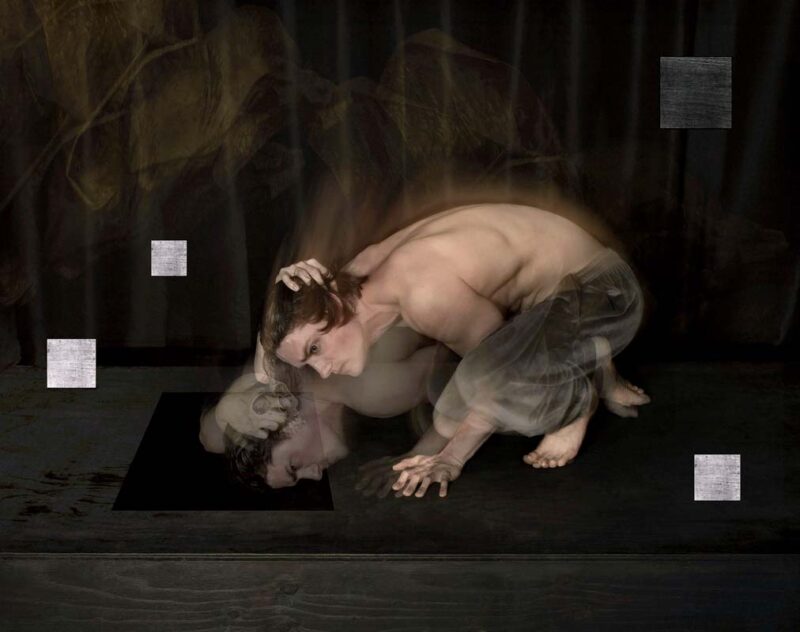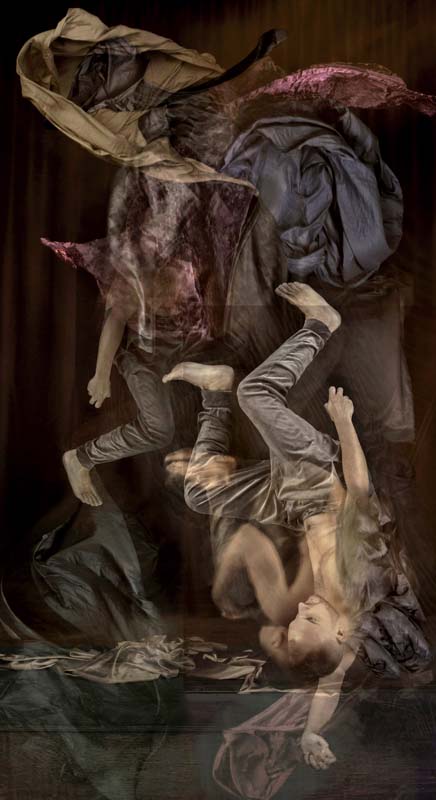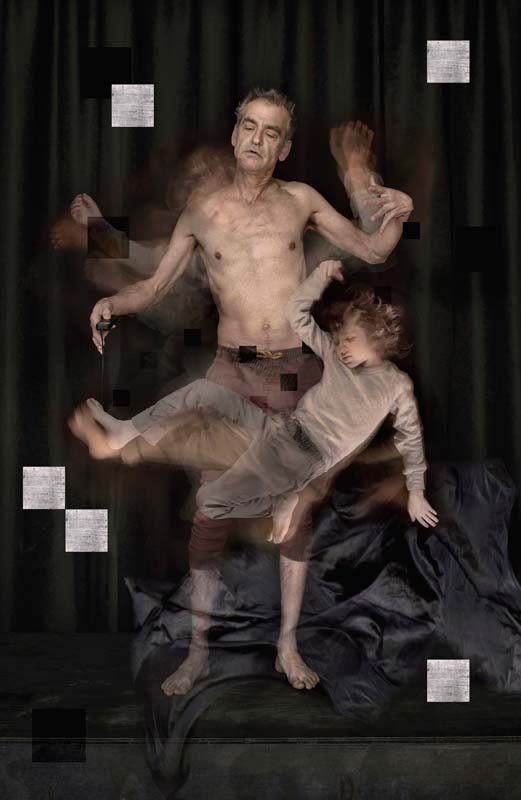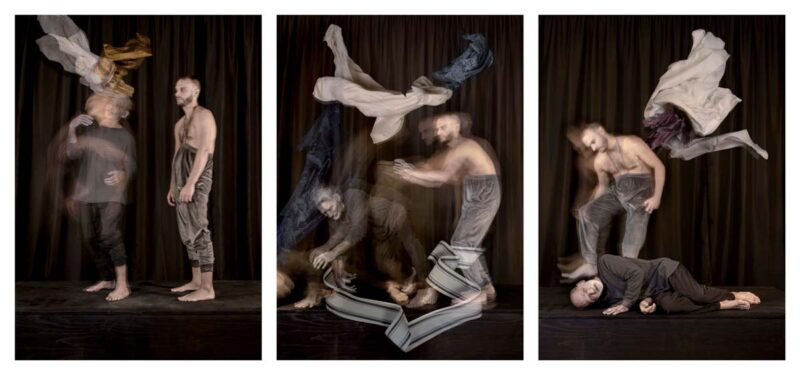[Summer 2024]
by Karl-Gilbert Murray
[EXCERPT]
Each image that Jean-Jacques Ringuette creates forcefully, determinedly, and constantly assails the viewer’s eye. Its ambience, whether dreamlike, conflictual, or surrealistic, always offers a mix of affects that reflect a mythology of the human condition and provoke an instant response to the unpredictable spectacle of life. Ringuette’s photographs presented at Centre VU were intended to elicit a plethora of reactions to the religious or cultural myths that bear the legacy of modern and ancestral narratives. Some of his visual narratives, taking a distance from historical consciousness, revive the suffering of saints and martyrs. Others bring rites to life: crucifixions, annunciations, ascensions, and apparitions. Still others, contemporary photographic reconstructions, use figurative illusionism to expose the theatrical and the scenic.
Each photograph exhibits a genealogy of residual images that may arouse sentiments anchored in flesh. Like a visceral declaration, the images give a sense of déjà vu and invite forth Icarus, Narcissus, Ganymede, and Apollo. Just as the meaning of images is deduced through intuition rather than dependence on elucidation – through a surfeit of insinuations – this visual corpus presentifies what can be seen simultaneously: the sensory and the invisible. In this way, the fragmentation of figures into ghostly images, thanks to the models’ quick movements or digital manipulation, metaphorizes an affinitive link between these bodies portrayed, imprisoned in the illusion of an emotional abyss, and viewers’ bodies.
The circumstances of the photography sessions thus materialize a temporal – historicized – voyage during which the models mysteriously open a breach in a familiar but rather curious world. The photographic blur – combined with direct confrontation with human emotion – creates a visual deployment of the actantial schema: here, the deformation of facial features is used as de-monstration. “Optical perversions” arise in which the ghostly physiognomy of the models, infused with realism, complexifies our relationship with the world. Are these vanities that make explicit the brevity of life or simply the imaging of a mental process that dissociates the spectral presence from its original form? The changes in body appearance trouble both the almost-imperceptible identification of the models and the specificity of the photographic medium’s capacity to reproduce reality.
The figures express the disarray of a tragic, anguished life. Their inability to move, beyond the surface, engages a reflection on the aesthetic manipulations that may bring different emotional expressions to light: anxiousness, moral solitude, and so on. As Ringuette objectifies their grimaces and facial spasms, he slips in references to the paintings of Jacopo Ligozzi, Hieronymus Bosch, and Quentin Metsys; the images captivate us with a similar psychological exhibitionism, evoking suffering, distress, and melancholy.
Stripped of all objectivity, the photographs maintain a comprehension based on body language that, by presenting disturbed affective states, supplants the idea that they are self-portraits. They capture various states of mind rather than exposing personalities for examination – although they are intriguing. Against a veil-blocked background, each photographic scene recounts the circumstances surrounding its composition – sometimes calling upon the images of devotion that, since the Renaissance, have influenced our knowledge of the world.
So, here is a series of photographs composed in a portfolio hybridized with metaphors and with citations to the history of painting and photography. Whence Ringuette’s interest in, among other things, Muybridge-style chronophotography that enables him to visually imitate bodies’ changes of position in space – actualized in a succession of images –, and to personify the physiological expression of the body in motion. De facto, Ringuette’s work fences off a visual field in which everything is involved in transcending the limits of representation by attempting to draw closer to the viewer. Now, the desire to accentuate the models’ gestures, fostering a distancing rather than an invitation to conversation, triggers an alternative mode of communication that unsettles the verbal narrative in favour of an emotional decoding.
The solitude shared by the figures, which seems to be manifested only within extremely unadorned compositions, continually leads us toward the abysses of the unconscious that open up when we examine historical references. They also feed our comprehension, which is furthered in both the construction and the stripping down of scenographies; sometimes, under the guise of mutation, they wear a second skin – silvery tiles that formally mark the history of photography, especially the transition from silver to digital.
Ringuette confers importance on the historical value of images – translated between appearance and illusion – which he enhances with his aesthetic criteria. This way of studying moral, intellectual, and physical traits of figures builds their psychological identity and intensifies their sensitivity. Similarly, pathetic affects, as means of expression, are Ringuette’s inspiring overarching subjects, ranging from Marian assumptions to the descent of rebellious angels, enabling him to project the present into the past and, inversely, to adapt the past into the visual representation here and now.
–
Critic and art historian Karl-Gilbert Murray has published numerous essays, catalogues, and exhibition booklets. As a curator, he has presented more than twenty exhibitions in Canada. In his area of specialization, bearing on questions about identity, he probes the intersections between gender studies and issues underlying alternative sexualities,
particularly gay ones, in the visual arts field.
–
[ Complete issue, in print and digital version, available here: Ciel variable 126 – TRAJECTORIES ]
[ Complete article, in digital version, available here: Jean-Jacques Ringuette, Sombre – Méditation sur les abîmes – Karl-Gilbert Murray
]




